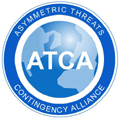
The Eight Bubbles: What are the
Numbers suggesting?
London, UK - 8th November 2008, 09:01 GMT
Dear ATCA Open & Philanthropia Friends
[Please note that the views presented by individual contributors
are not necessarily representative of the views of ATCA, which is neutral.
ATCA conducts collective Socratic dialogue on global opportunities and threats.]
There is a rising myth of the single bubble which suggests that The Great
Unwind -- manifest as the global credit crunch -- is essentially about subprime
mortgage default, a USD 1.5 trillion challenge. The truth is that there
are as many as eight bubbles at play which are in the process of bursting,
taking the form of deleverage on an unprecedented scale. Even 1929 pales
in comparison. At a recent ATCA roundtable we posed the following questions
for Socratic dialogue:
I. If the Dow Jones Industrial Average has fallen from above 14,000 to below
9,000 as a result of the subprime mortgage bubble collapse, ie a 5,000+
points drop or 33% decline, where will the equities market reach by 2010
as other larger bubbles burst?
II. If the world government bond market is around USD 30 trillion, how can
governments rescue the eight bubbles bursting step by step with an ever
larger quantum and momentum? What ought to be the focus at Bretton Woods
II starting November 15th?
There are at least eight bubbles in play worldwide and their approximate
scale is as follows:
1. Subprime Mortgage linked Loans and other Assets (USD 1.5 trillion);
2. China, India, Eastern Europe and other Emerging Market Loans (USD 5 trillion);
3. Commodities (Commodity Derivatives at about USD 9 trillion);
4. Corporate bonds (USD 15 trillion);
5. Commercial (USD 25 trillion) and Residential property (USD 50 trillion);
6. Credit Cards Outstanding Debt (USD 2.5 trillion);
7. Currencies (Foreign Exchange Derivatives at about USD 56 trillion); and
8. Credit Default Swaps (USD 58 trillion) as a subset of all Derivatives
(USD 1,144 Trillion).
In the ATCA briefing, "The Invisible One Quadrillion Dollar Equation"
we discussed the main categories of the USD 1.144 Quadrillion derivatives
market as quoted by the Bank for International Settlements in Basel, Switzerland:
1. Listed credit derivatives stood at USD 548 trillion;
2. The Over-The-Counter (OTC) derivatives stood in notional or face value
at USD 596 trillion and included:
a. Interest Rate Derivatives at about USD 393+ trillion;
b. Credit Default Swaps at about USD 58+ trillion;
c. Foreign Exchange Derivatives at about USD 56+ trillion;
d. Commodity Derivatives at about USD 9 trillion;
e. Equity Linked Derivatives at about USD 8.5 trillion; and
f. Unallocated Derivatives at about USD 71+ trillion.
The relative scale of the world's financial engine is as follows:
1. The entire GDP of the US is about USD 14 trillion.
2. The entire US money supply is also about USD 15 trillion.
3. The GDP of the entire world is USD 50 trillion. USD 1,144 trillion is
22 times the GDP of the whole world.
4. The real estate of the entire world is valued at about USD 75 trillion.
5. The world stock and bond markets are valued at about USD 100 trillion.
6. The big banks alone own about USD 140 trillion in derivatives.
7. The population of the whole planet is about 6 billion people. So the
derivatives market alone represents about USD 190,000 per person on the
planet.
Assuming a 10% conservative default or decline in asset value, this could
be a USD 100 trillion challenge on the base of a Quadrillion. What are the
likely outcomes? We are keen to receive your answers and solutions. Please
note that the numbers quoted are a rough guide.
We welcome your thoughts, observations and views. Thank you.
Best wishes
ATCA: The Asymmetric Threats
Contingency Alliance is a philanthropic expert initiative founded
in 2001 to resolve complex global challenges through collective
Socratic dialogue and joint executive action to build a wisdom
based global economy. Adhering to the doctrine of non-violence,
ATCA addresses asymmetric threats and social opportunities arising
from climate chaos and the environment; radical poverty and microfinance;
geo-politics and energy; organised crime & extremism; advanced
technologies -- bio, info, nano, robo & AI; demographic skews
and resource shortages; pandemics; financial systems and systemic
risk; as well as transhumanism and ethics. Present membership
of ATCA is by invitation only and has over 5,000 distinguished
members from over 120 countries: including 1,000 Parliamentarians;
1,500 Chairmen and CEOs of corporations; 1,000 Heads of NGOs;
750 Directors at Academic Centres of Excellence; 500 Inventors
and Original thinkers; as well as 250 Editors-in-Chief of major
media.
The Philanthropia, founded in 2005, brings together over
1,000 leading individual and private philanthropists, family offices,
foundations, private banks, non-governmental organisations and
specialist advisors to address complex global challenges such
as countering climate chaos, reducing radical poverty and developing
global leadership for the younger generation through the appliance
of science and technology, leveraging acumen and finance, as well
as encouraging collaboration with a strong commitment to ethics.
Philanthropia emphasises multi-faith spiritual values: introspection,
healthy living and ecology. Philanthropia Targets: Countering
climate chaos and carbon neutrality; Eliminating radical poverty
-- through micro-credit schemes, empowerment of women and more
responsible capitalism; Leadership for the Younger Generation;
and Corporate and social responsibility.
Intelligence Unit | mi2g | tel +44 (0) 20 7712 1782 fax +44
(0) 20 7712 1501 | internet www.mi2g.net
mi2g: Winner of the Queen's Award for Enterprise in the category
of Innovation
|

